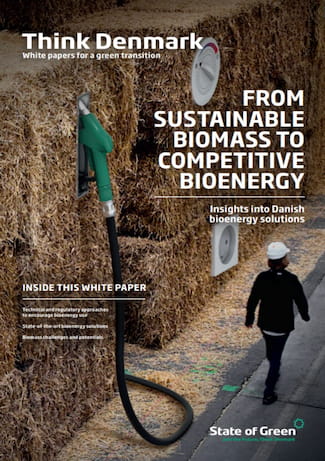Download our publication on bioenergy today
This article is part of our publication ‘Bioenergy’.
Download nowPerspective
Biogas
Biomass


On a global scale, we see a growth in population, and the demand for energy increases. This requires us to see our resources in a new perspective. There are huge unexploited potentials both in agricultural biomass residues that are often left in the fields and in household waste that are landfilled. Agricultural biomass residues and household waste is filled with unused sustainable energy that can benefit our society. The EU has set a 2020 target or 10% renewable energy in the transport sector and 50% recycling of our household waste. Currently, the transport sector is 94% dependent on oil that is primarily imported. While only a quarter of the household waste is reused, and approx. 80 million tonnes of waste per year is landfilled, entailing valuable resources are lost.
Moving towards biobased societies and circular economy requires a more intelligent use of our resources. For more than a decade, DONG Energy
has been working on two enzyme-based technologies that convert agricultural residues and ordinary household waste to valuable resources such as second generation bioethanol, biogas and other types of bioenergy. The two biotechnologies, Inbicon and REnescience, contribute to handle global
challenges concerning pollution and resource scarcity, and they fit well with the increasing focus on responsible handling of our valuable resources to develop more sustainable societies.
REnescience recovers valuable products from unsorted municipal solid waste. The enzyme treatment of the waste turn the organics into a bioliquid and enables separation of the recyclable materials. Valueis efficiently recovered in the waste and the bioliquid is highly suitable for biogas production. REnescience is a tried-and-tested technology at the demonstration plant in Copenhagen. DONG Energy is currently developing two projects for a full-scale REnescience plant in the UK and in Holland. In full operation, the capacity of each plant is 15,000 tonnes of waste per hour, which equals waste from more than 250,000 people per year. Other countries are looking into the REnescience technology as part of the solution for sustainable waste management.
The Inbicon technology turns agricultural residues such as wheat straw, corn stover and bagasse into second generation bioethanol and valuable products. Bioethanol is highly suited to lower carbon emissions in the transport sector, while creating rural development and lowering dependence on oil. The other valuable products from the process can generate additional sustainable energy – the lignin can be burned in power plants to produce
renewable electricity and district heating, and the vinasse is beneficial for biogas production, while the leftover can go back to the fields as fertiliser.
The Inbicon technology is a proven technology, which has been tested in continuous operation for more than 15,000 hours at our demonstration plant in Denmark. The focus of both biotechnologies is to make more out of less and turning waste into valuable products that can lower our dependence for fossil fuels.

This article is part of our publication ‘Bioenergy’.
Download now